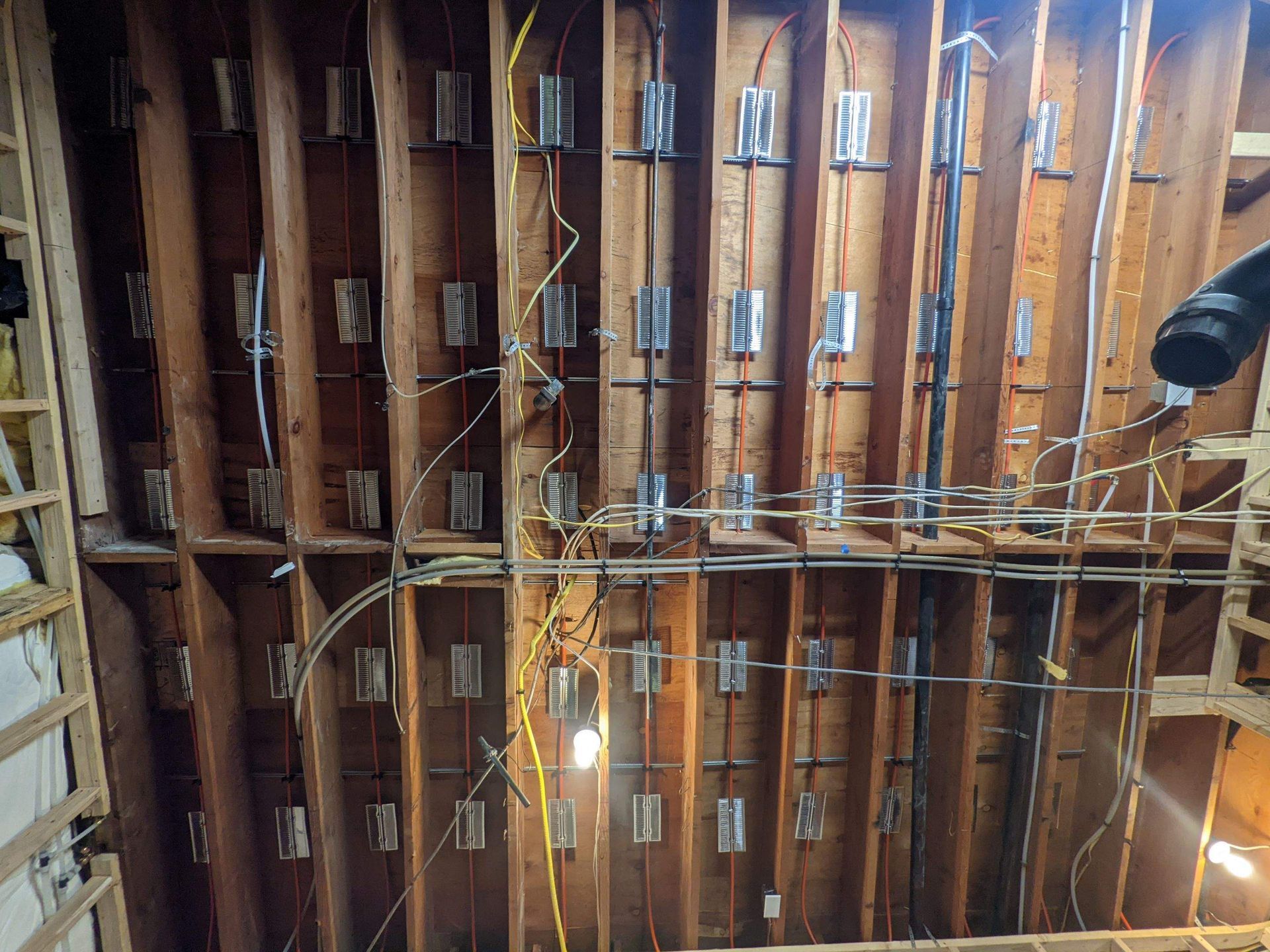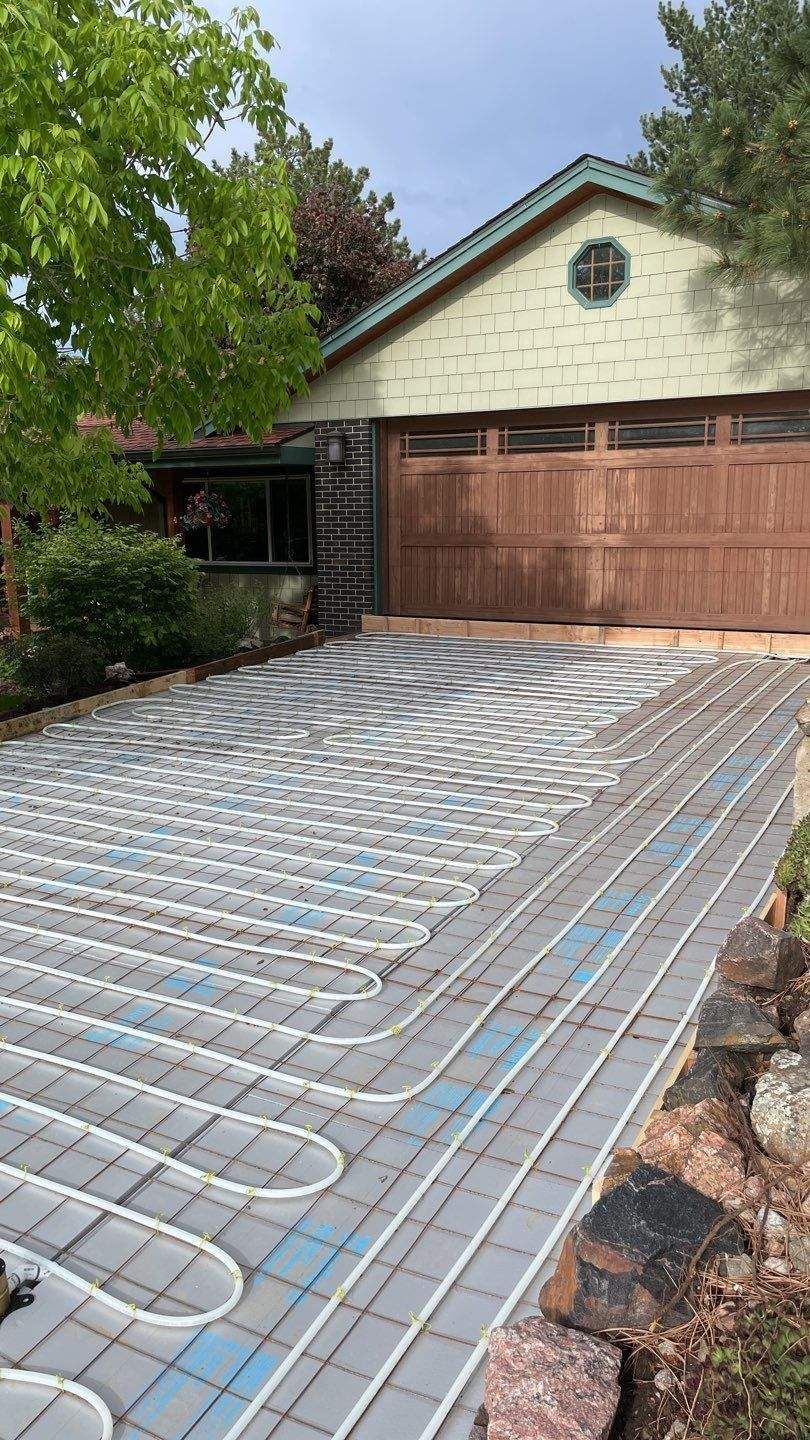Retrofit Installations in Denver
Hydronic retrofits that respect your home
Hydronic retrofits work best when the system fits the home. We design each installation around your existing structure, finishes, and lifestyle.
Advanced Hydronics upgrades classic Denver homes in neighborhoods such as Wash Park, Hilltop, and the Highlands with
radiant heat and modern controls that blend seamlessly into daily life. Low-profile assemblies, plates, or wall panels allow clean installations under hardwood, tile, or stone. You can expect clear communication from the first walk-through to the final test.
What a retrofit includes
A retrofit can be as focused as a single room or as comprehensive as a whole-home upgrade. We evaluate heat load, floor buildup, boiler capacity, and control strategy to ensure consistent comfort across every zone. Our team coordinates with contractors to protect finishes, maintain a clean site, and keep the schedule predictable.
- Radiant floor heating added under joists, overpour, or thin-panel assemblies.
- Boiler right-sizing and control upgrades with outdoor reset.
- Manifold locations chosen for service access and minimal disruption.
- Organized mechanical rooms with labeled loops and ECM circulators.


Why a retrofit is worth it
Hydronic retrofits deliver quiet comfort and steady heat without major renovation. Upgrades reduce fuel use while improving temperature balance through every season. Many homeowners also choose to include an indirect water heater for fast, consistent hot water during busy mornings and cold Denver winters.
- Even temperatures and fewer drafts throughout living areas.
- Cleaner indoor air with no blower to circulate dust.
- Lower water temperatures for improved efficiency at altitude.
- Clear service paths for future access and maintenance.
See why hydronics transforms existing homes
Hydronic heating brings quiet, even warmth to older homes without the drafts or dust of forced air while preserving your home’s character.

What to expect from your retrofit project
We start with a detailed walkthrough, design around your existing structure, and coordinate every step to protect finishes and minimize disruption. From tubing layout to final commissioning, expect organized work and results you can feel.

Find the right system for your retrofit
Each retrofit blends the right equipment with your home’s structure and finishes. Explore how boilers, heat pumps, and low-profile radiant assemblies work together for comfort, quiet, and efficiency.
Upgrading Comfort in Existing Homes
Can hydronic heat be added to my existing home?
Yes. Most homes can be retrofitted for hydronic heating without major renovation. We use low-profile or under-joist systems that install cleanly beneath existing floors or within remodel areas, preserving your finishes and trim.
Will a retrofit require removing floors or walls?
In most cases, minimal disruption is needed. We evaluate the best assembly for your home to avoid unnecessary demolition. Our goal is to add comfort, not construction dust. When installing radiant heat on levels above finished areas, the ceiling drywall below may need to be removed. We review all options during design so there are no surprises during installation.
Can my existing boiler or water heater be reused?
Often, yes. We assess the boiler’s age, condition, and output to determine whether it has spare capacity for additional zones. If not, we’ll recommend a right-sized upgrade or secondary plant to match the home’s load and new system design.
How long does a retrofit project take?
Smaller zones can be completed in days, while full-home retrofits typically align with remodel schedules. We provide clear timelines and coordinate closely with your contractor to minimize disruption.
What kind of efficiency gains can I expect?
Hydronic retrofits often reduce fuel use through lower water temperatures, zoning, and outdoor reset control. Many homeowners also notice improved comfort at lower thermostat settings.
is phased installation possible?
Yes. Many clients begin with key areas and plan future expansion. Our designs account for phased growth, so every addition integrates seamlessly later.
